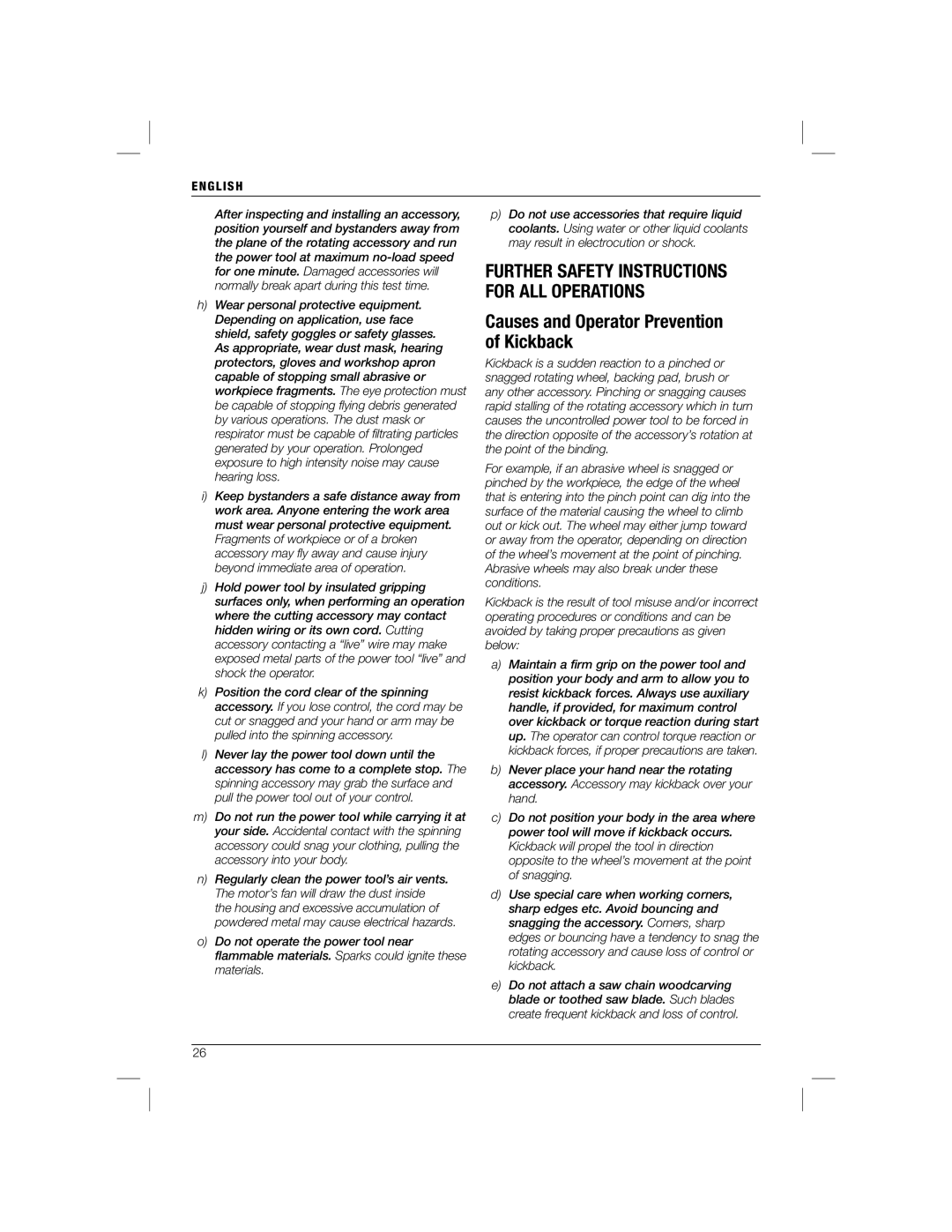DW882 specifications
The DeWalt DW882 is a high-performance angle grinder designed for professional contractors and DIY enthusiasts alike. Known for its powerful motor and robust construction, the DW882 offers versatility in a variety of grinding and cutting tasks. One of the standout features of this tool is its 4.5-inch wheel capacity, which allows for efficient operation in a multitude of applications, from metalworking to masonry.At the heart of the DW882 lies a 12-amp motor that generates a no-load speed of 11,000 RPM. This powerful motor ensures that users can tackle tough materials with ease, providing consistent power for grinding, cutting, and polishing tasks. The high-speed operation not only improves efficiency but also enhances the tool’s ability to cut through materials quickly and smoothly.
The DW882 is equipped with an adjustable guard, allowing for customization based on the workpiece and task at hand. This feature adds an additional layer of safety, ensuring that sparks and debris are directed away from the user. Additionally, the grinder has a comfort grip, which provides better handling and control, reducing user fatigue during prolonged use.
Another key characteristic of the DeWalt DW882 is its durable construction. Built with high-quality materials, this angle grinder is designed to withstand heavy usage in demanding environments. The tool features a sealed and protected motor that helps prevent dust and debris from entering and causing damage, thereby extending its lifespan.
Moreover, the DW882 incorporates DeWalt's sophisticated safety mechanisms. A paddle switch with a lock-on function ensures that the grinder operates only when intended, reducing the risk of accidental start-ups. The anti-vibration design further enhances user comfort by minimizing vibrations transferred to the hands and arms during operation.
The versatility of the DW882 is enhanced by its compatibility with a wide range of accessories, such as cutting wheels, brushes, and grinding discs. This makes it an ideal choice for various applications, whether it's cutting rebar, grinding welds, or prepping surfaces for painting.
In summary, the DeWalt DW882 stands out as a powerful and reliable angle grinder tailored for both professional and personal use. With its robust motor, adjustable guard, durable construction, and safety features, it is engineered to perform efficiently across a diverse range of tasks, making it a valuable addition to any tool collection.

